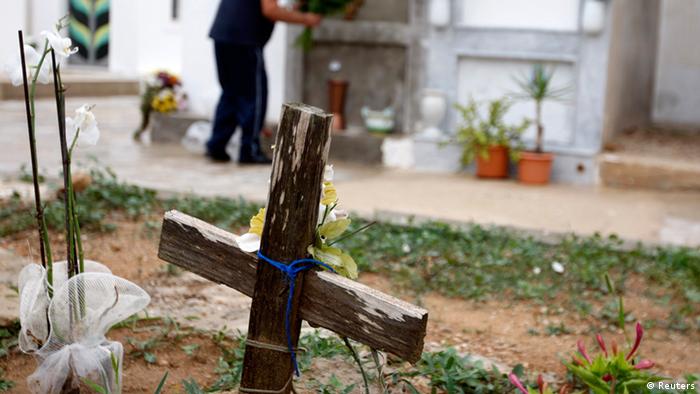
Every year tens of thousands of people leave poor, war-torn countries to seek better fortunes in Europe. Many risk dangerous sea voyages for the chance to improve their lives, but a huge percentage die as a result.
The number of fatalities is horrific enough, but what’s even worse is that their bodies are often not recovered.
Some who are trying to reach Europe from Africa, the Middle East or Asia do so by land via Turkey, but the majority braves the waters, often with deadly consequences.
Between 2000 and 2013, an estimated 23,000 men, women and children died trying to reach the continent. Most were drowning victims.
That number of fatalities is horrific enough, but what’s even worse is that their bodies are often not recovered, their deaths go undocumented and their families are never notified.
Journalists and activists alarmed by the trend formed a team to conduct the broadest study to date on migration deaths, gathering data and cross-referencing public and non-governmental records. The result? “The Migrant Files,” an interactive online database and map that detail Europe-bound migrant deaths.
And the trend is growing more deadly each year. According to Danielle Grasso, who worked on “The Migrant Files,” one out of every 200 people who tried reaching Greece and Turkey by boat in 2010 died — and by 2012, the number had jumped to one out of every 30 people. Stronger anti-immigration policies in Europe, coupled with tighter land border controls between Greece and Turkey, have helped boost the popularity of these dangerous sea routes.
Despite the high human cost, this issue only grabs headlines if a large boat sinks as it did last October, when 360 would-be emigrants perished off the coast of Lampedusa, Italy’s southernmost territory.
The waters surrounding this small island have seen nearly 4,500 hundred deaths since 2000. Locals are making great efforts to help the thousands who do make it to shore — so much so that Lampedusa was a 2014 Nobel Peace Price nominee for “showing a unique ability to express empathy and solidarity.”
Following the October tragedy, the EU vowed to take action. “The European Union cannot accept that thousands of people die at its borders,” said José Manuel Barroso, president of the European Commission.
Two months later, the EU launched EUROSUR, a new approach to patrolling Europe’s external borders, focused on intelligence gathering and faster information exchange between agencies, that aims to stem the tide of illegal immigrants while “reducing the death toll by rescuing more lives at sea.”
So far, no member state or European body has come up with a way to quantify the exact number of migrants killed in transit.
But there’s a clear tension between the EU’s vow to save lives and its commitment to stop the flow of people. After all, strong border control is partly what pushes migrants to risk their lives at sea in the first place.
So far, no member state or European body has come up with a way to quantify the exact number of migrants killed in transit. Frontex, the European agency in charge of border control, collects statistics on “lives saved” by European rescue missions — but not on lives lost.
Countries of origin are also trying to stop their citizens from embarking on perilous journeys by coordinating with Europe. At a recent EU-Africa summit, European and African leaders drew up a plan to facilitate legal immigration, promote economic development and fight the traffickers.
While both continents do what they can to stem the tide of people setting off on treacherous journeys, thousands of families in countries like Morocco, Syria, Senegal and Nigeria will forever wonder whether their loved ones found better lives in Europe — or died trying.
Monday 16 June 2014
http://www.ozy.com/acumen/the-many-would-be-immigrants-missing-in-the-mediterranean-sea/32039.article

0 comments:
Post a Comment